In 1978, just across the border from South Africa in Gabarone, a group of exiled South Africans formed the Medu Art Ensemble. Medu became an armed cultural wing of the African National Congress (ANC) specifically, and the anti-apartheid struggle more broadly. They were composed of poets, playwrights, painters, musicians, dancers, and graphic designers. On top of the production of posters, publications, and theatre perfromances, some of the more militant members also used Medu as a cover to engage in more direct militant aid, sneaking into South Africa to train troops for the ANC military wing, Umkhonto weSizwe.
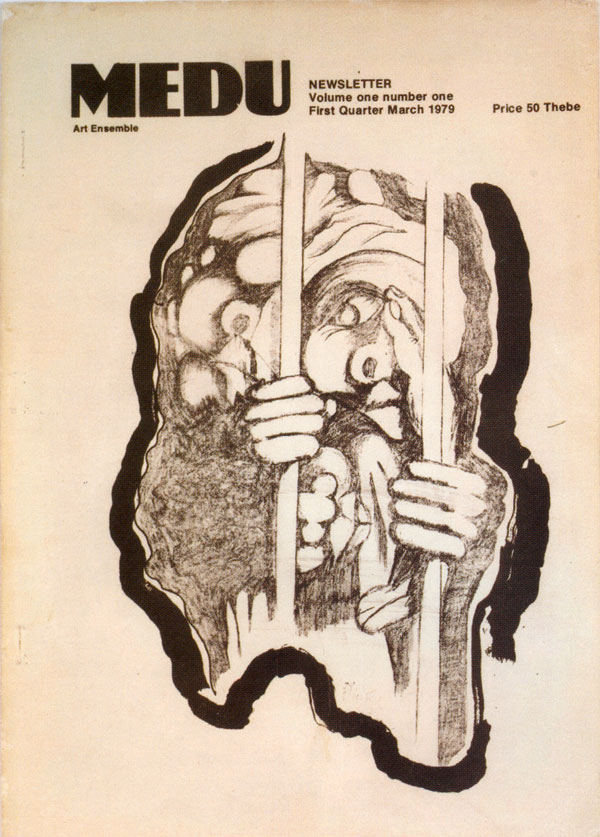
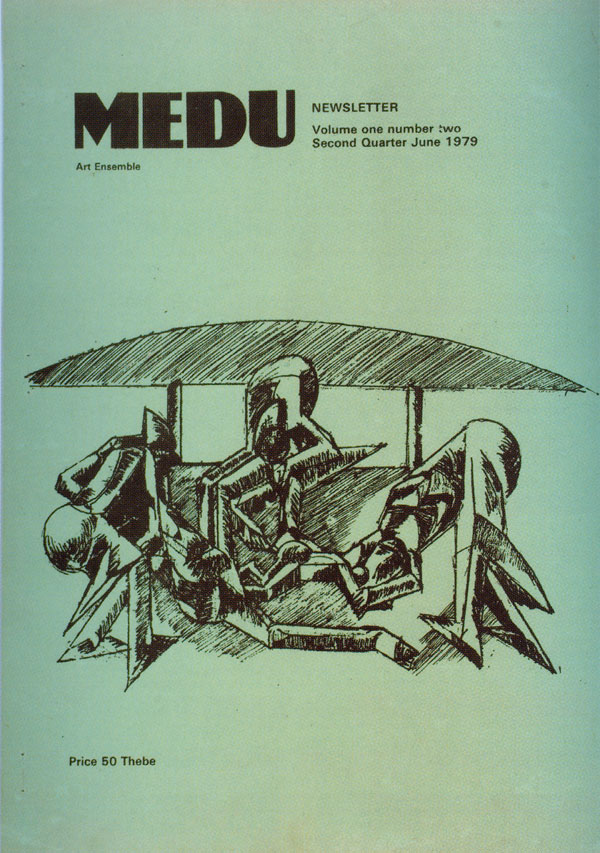
One of Medu’s main goals was the production and distribution of anti-apartheid propaganda, particularly posters. They designed anti-apartheid posters with the intention of sending them into South Africa, giving voice to the struggle. Medu also wanted the South African movement to embrace the screen printing of political posters as a mass communications tool, since screenprinting takes little capital or set up, and could be easily taught to activists.
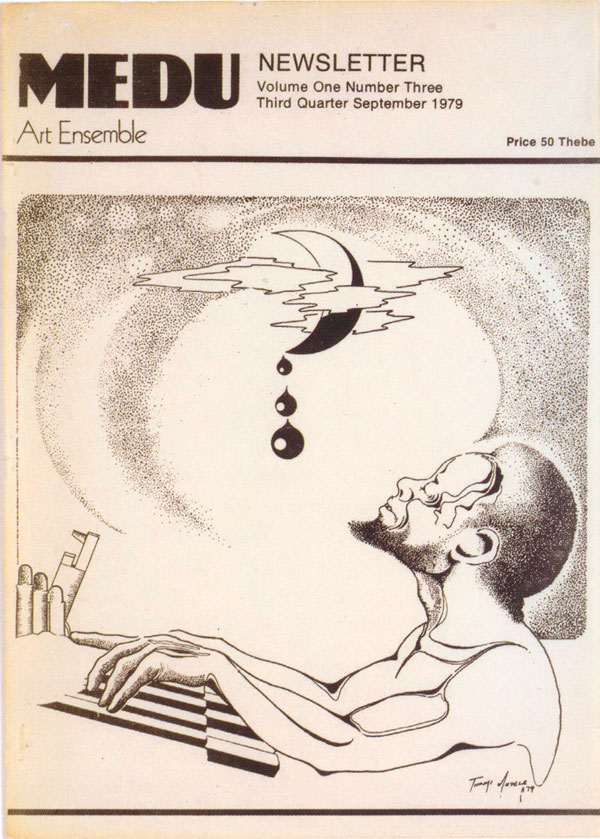
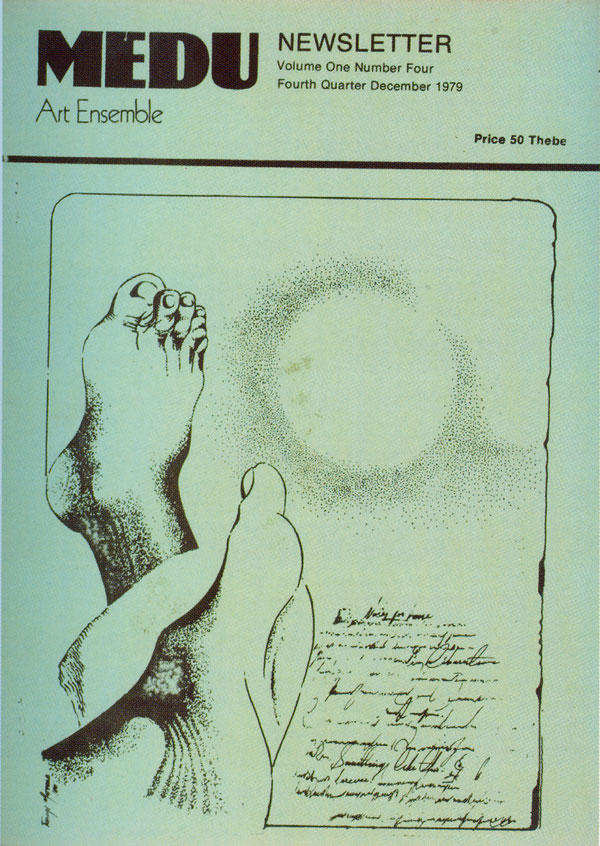
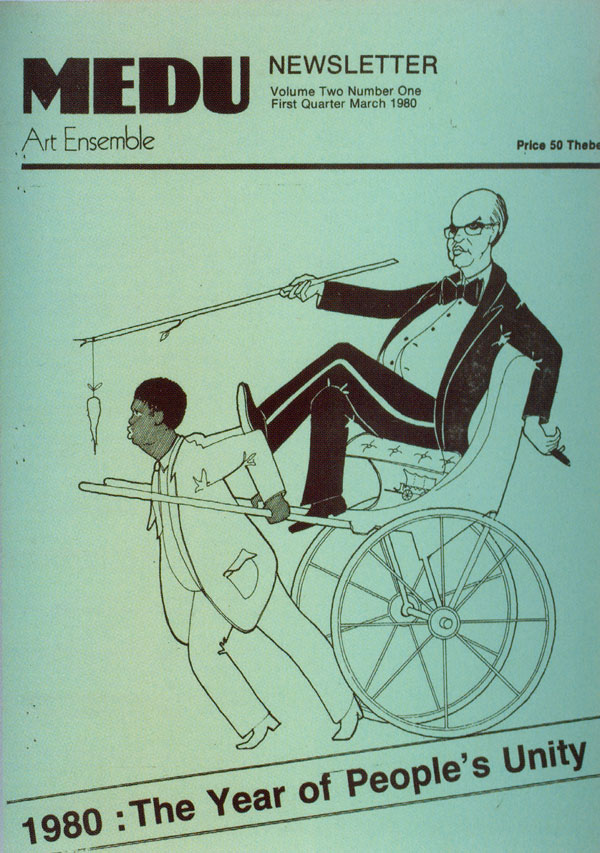

In July 1982, Medu organized the Culture and Resistance Festival in Botswana and began training activists to silkscreen. Right after the festival, the government banned Medu’s posters, forcing them to be smuggled into the country. In 1985, South African army units crossed the border and murdered multiple Medu members; those remaining were forced underground, effectively destroying the group.


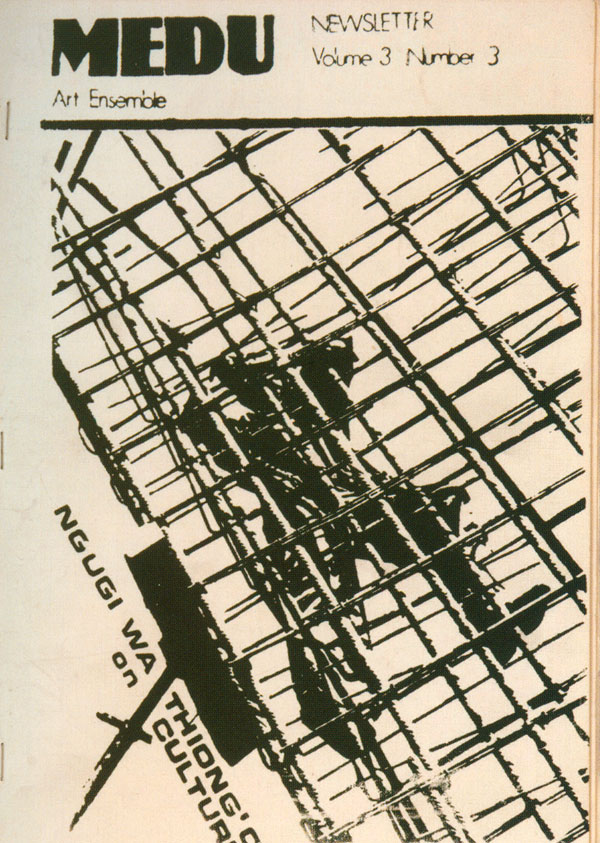
While they existed, the “Publications and Research Unit” of Medu produced this newsletter, which included reviews, poetry, and political analysis. You can see the covers became more intricate and accomplished as the group developed. Volumes 4-6 have bold, effective, multi-colored graphic covers.

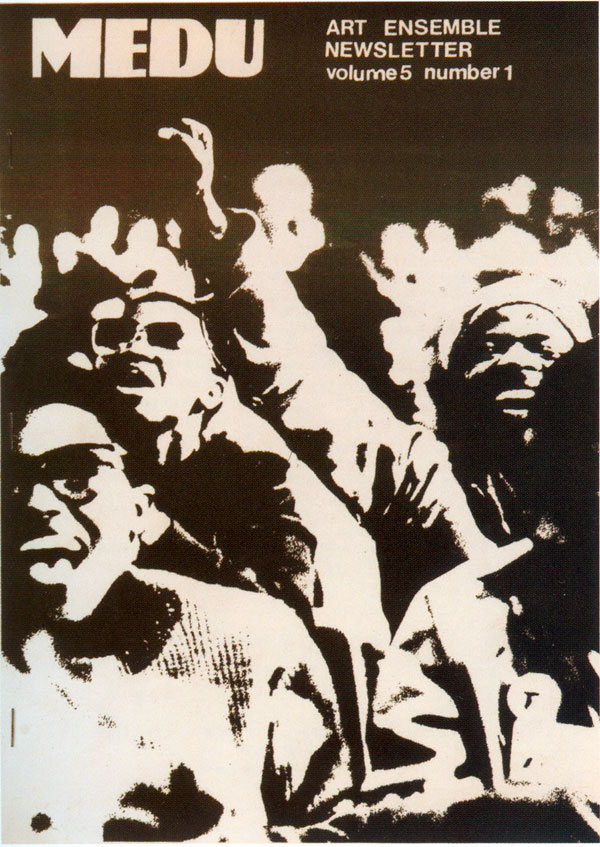
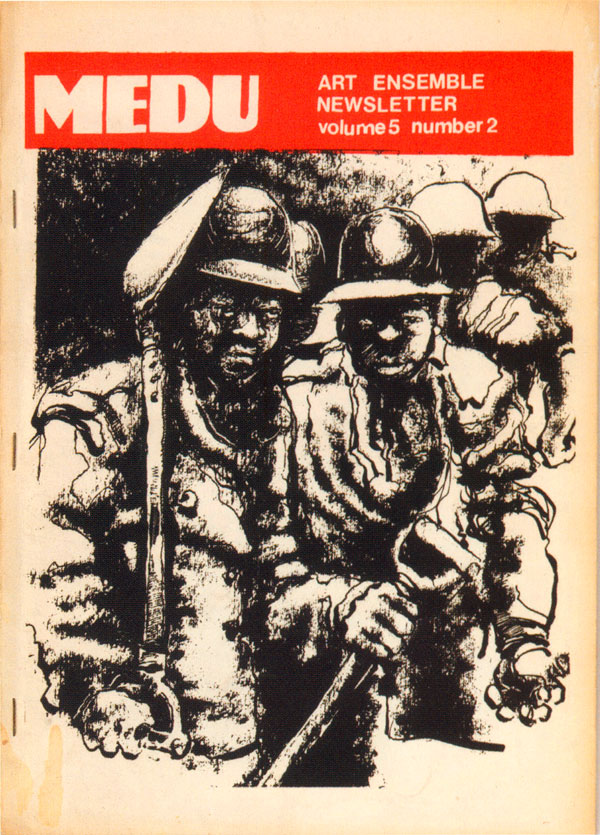

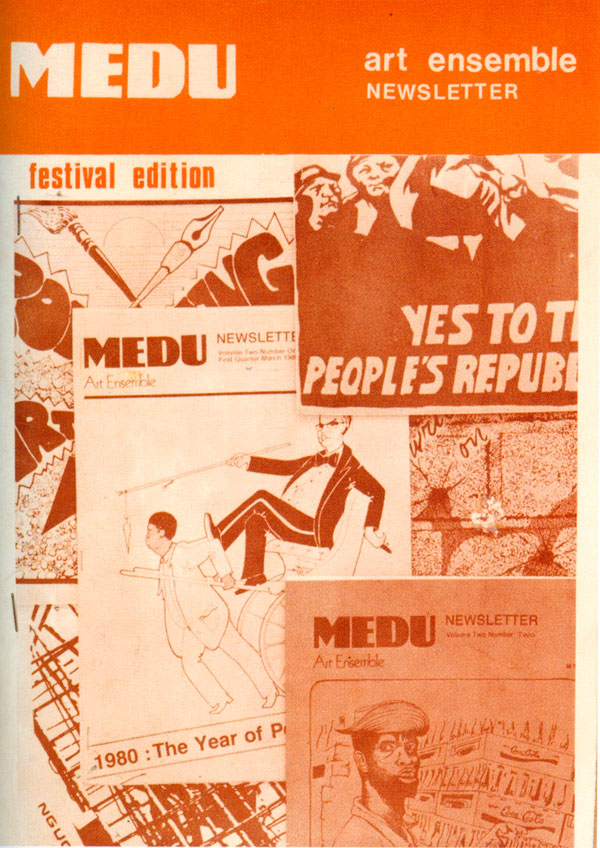
There are four books that are relatively easy to acquire that have more information about Medu Art Ensemble and the cultural wing of the anti-apartheid movement (in particular visual arts and posters), All four are well worth reading:
Clive Kellner and Sergio-Albio González, eds. Thami Mnyele and Medu Art Ensemble Retrospective. Johannesburg: Jacana Media, 2009.
The Poster Book Collective (South African History Archive). Images of Defiance: South African Resistance Posters of the 1980s. Johannesburg: Raven Press, 1991.
Judy Seidman. Red on Black: The Story of the South African Poster Movement. Johannesburg: STE Publishers, 2007.
Diana Wylie. Art & Revolution: The Life and Death of Thami Mnyele, South African Artist. Charlottesville: University of Virginia Press, 2008.







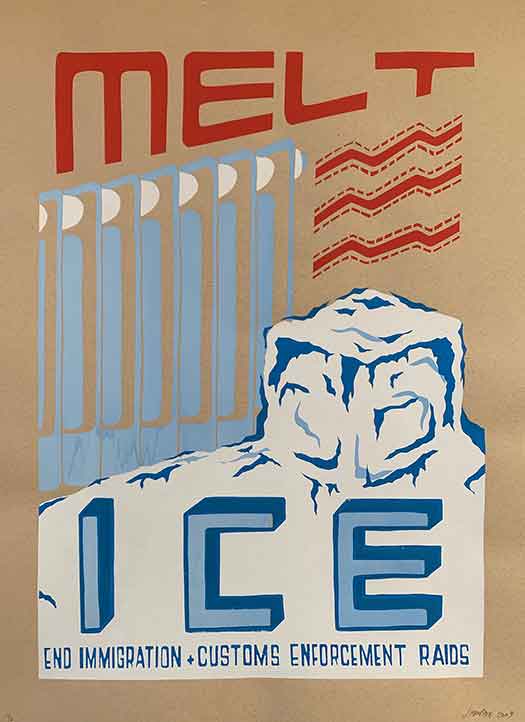
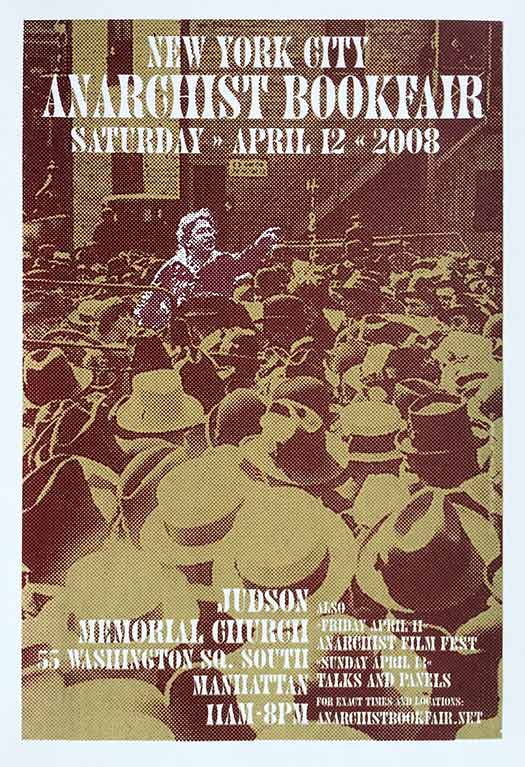
I was youth at the time. Subsequently lived half of my life in UK. I know some of the Ensemble personally but never knew of its existence until today. I’m seriously touched as I’m conscious of a historical generational loss borne out of my absence on site at the time. I know I certainly would have been a part of it in some way
Hi. My name is Thabo Mokone. I am writing a book on the 120 artworks that I own. Amongst them there are 4 COSATU campaign posters with the artwork signed Miles Pelo, Lusaka.
I have tried to do a Google search on him but I find very little – he was with MEDU in Gaberone. Left for Cuba, then went to the UK to study Graphic Design and then went to Lusaka. That’s all.
If you have some info on him or have leads I can follow, please help.
Regards
Thabo Mokone.
Hi Thabo, I don’t know much about Miles, but I can ask former Medu members and see if they do. I will pass your email on to them.
Hi Thabo,
I’ve read your comment above and I am interested in contacting you about the book you are writing on the artworks. I invite you to contact me so we can discuss how to reach as wide an audience as possible with this book.
Kind regards,
Thabo
Hi Zenani Micere
Thanks for responding to my post – I just saw your post this morning.
Yeah, I am keen to hear your ideas about reaching broader audiences.
Thanks
Thabo Mokone
Medu newsletter Volume 6 numbers 1-2 has a portrait of a young South African woman on its front cover. I would like to use it as an illustration for a future issue of Feminist Revolution. Is there any way to access the drawing without the magazine cover?